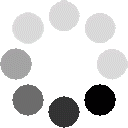Rights Contact Login For More Details
- Wiley
More About This Title Process Control - A Practical Approach
- English
English
Process Control: A Practical Approach is a ground-breaking guide that provides everything needed to design and maintain process control applications.
The book follows the hierarchy from basic control, through advanced regulatory control, up to and including multivariable control. It addresses many process-specific applications including those on fired heaters, compressors and distillation columns.
Written with the practicing control engineer in mind, the book:
Brings together proven design methods, many of which have never been published beforeFocuses on techniques that have an immediate practical applicationMinimizes the use of daunting mathematics – but for the more demanding reader, complex mathematical derivations are included at the end of each chapter Covers the use of all the algorithms, common to most distributed control systemsThis book raises the standard of what might be expected of even basic controls. In addition to the design methods it describes any shortcuts that can be taken and how to avoid common pitfalls. Proper application will result in significant improvements to process performance.
Myke King’s practical approach addresses the needs of the process industry, and will improve the working practices of many control engineers.
“This book would be of value to process control engineers in any country.”– Mr Andrew Ogden-Swift, Chairmain, Process Management and Control Subject Group, Institution of Chemical Engineers, UK
“This book should take the process-control world by storm.”– Edward Dilley, Lecturer in Process Control, ESD Simulation Training
- English
English
About the Author
Myke King is the Director of Whitehouse Consulting, UK, an independent consulting organisation specialising in process control.
- English
English
Preface ix
About the Author xv
1. Introduction 1
2. Process Dynamics 3
2.1 Definition 3
2.2 Cascade Control 9
2.3 Model Identification 11
2.4 Integrating Processes 20
2.5 Other Types of Process 22
2.6 Robustness 24
2.7 Laplace Transforms for Processes 27
References 28
3. PID Algorithm 29
3.1 Definitions 29
3.2 Proportional Action 30
3.3 Integral Action 33
3.4 Derivative Action 35
3.5 Versions of Control Algorithm 39
3.6 Interactive PID Controller 41
3.7 Proportional-on-PV Controller 43
3.8 Nonstandard Algorithms 50
3.9 Tuning 51
3.10 Ziegler-Nichols Tuning Method 52
3.11 Cohen-Coon Tuning Method 56
3.12 Tuning Based on Penalty Functions 57
3.13 Manipulated Variable Overshoot 60
3.14 Lambda Tuning Method 61
3.15 IMC Tuning Method 63
3.16 Choice of Tuning Method 65
3.17 Suggested Tuning Method for Self-Regulating Processes 66
3.18 Tuning for Load Changes 66
3.19 Tuning for Unconstrained MV Overshoot 71
3.20 PI Tuning Compared to PID Tuning 72
3.21 Tuning for Large Scan Interval 74
3.22 Suggested Tuning Method for Integrating Processes 76
3.23 Implementation of Tuning 78
3.24 Loop Gain 79
3.25 Adaptive Tuning 79
3.26 Initialisation 80
3.27 Anti-Reset Windup 81
3.28 On-Off Control 81
3.29 Laplace Transforms for Controllers 83
3.30 Direct Synthesis 85
References 88
4. Level Control 91
4.1 Use of Cascade Control 91
4.2 Parameters Required for Tuning Calculations 93
4.3 Tight Level Control 97
4.4 Averaging Level Control 100
4.5 Error-Squared Controller 105
4.6 Gap Controller 108
4.7 Impact of Noise on Averaging Control 111
4.8 General Approach to Tuning 113
4.9 Three-Element Level Control 114
5. Signal Conditioning 117
5.1 Instrument Linearisation 117
5.2 Process Linearisation 119
5.3 Constraint Conditioning 122
5.4 Pressure Compensation of Distillation Tray Temperature 124
5.5 Pressure Compensation of Gas Flow Measurement 125
5.6 Filtering 126
5.7 Exponential Filter 127
5.8 Higher Order Filters 129
5.9 Nonlinear Exponential Filter 130
5.10 Averaging Filter 131
5.11 Least Squares Filter 132
5.12 Control Valve Characterisation 136
5.13 Equal Percentage Valve 137
5.14 Split-Range Valves 140
6. Feedforward Control 147
6.1 Ratio Algorithm 147
6.2 Bias Algorithm 151
6.3 Deadtime and Lead-Lag Algorithms 152
6.4 Tuning 155
6.5 Laplace Derivation of Dynamic Compensation 161
7. Deadtime Compensation 163
7.1 Smith Predictor 163
7.2 Internal Model Control 166
7.3 Dahlin Algorithm 167
References 168
8. Multivariable Control 169
8.1 Constraint Control 169
8.2 SISO Constraint Control 170
8.3 Signal Selectors 171
8.4 Relative Gain Analysis 174
8.5 Steady State Decoupling 177
8.6 Dynamic Decoupling 180
8.7 MVC Principles 184
8.8 Parallel Coordinates 187
8.9 Enhanced Operator Displays 188
8.10 MVC Performance Monitoring 189
References 195
9. Inferentials and Analysers 197
9.1 Inferential Properties 197
9.2 Assessing Accuracy 203
9.3 Laboratory Update of Inferential 208
9.4 Analyser Update of Inferential 210
9.5 Monitoring On-stream Analysers 212
Reference 214
10. Combustion Control 215
10.1 Fuel Gas Flow Correction 215
10.2 Measuring NHV 220
10.3 Dual Firing 222
10.4 Inlet Temperature Feedforward 223
10.5 Fuel Pressure Control 225
10.6 Combustion Air Control 227
10.7 Boiler Control 236
10.8 Fired Heater Pass Balancing 237
11. Compressor Control 243
11.1 Polytropic Head 243
11.2 Flow Control (Turbo-Machines) 246
11.3 Flow Control (Reciprocating Machines) 251
11.4 Anti-Surge Control 252
12. Distillation Control 259
12.1 Key Components 262
12.2 Relative Volatility 263
12.3 McCabe-Thiele Diagram 266
12.4 Cut and Separation 271
12.5 Effect of Process Design 281
12.6 Basic Controls 285
12.7 Pressure Control 285
12.8 Level Control 299
12.9 Tray Temperature Control 315
12.10 Pressure Compensated Temperature 325
12.11 Inferentials 335
12.12 First-Principle Inferentials 342
12.13 Feedforward on Feed Rate 344
12.14 Feed Composition Feedforward 348
12.15 Feed Enthalpy Feedforward 349
12.16 Decoupling 350
12.17 Multivariable Control 352
12.18 On-stream Analysers 360
12.19 Towers with Sidestreams 361
12.20 Column Optimisation 364
12.21 Optimisation of Column Pressure 366
12.22 Energy/Yield Optimisation 368
References 370
13. APC Project Execution 371
13.1 Benefits Study 371
13.2 Benefit Estimation for Improved Regulatory Control 373
13.3 Benefits of Closed-Loop Real-Time Optimisation 380
13.4 Basic Controls 382
13.5 Inferentials 384
13.6 Organisation 385
13.7 Vendor Selection 389
13.8 Safety in APC Design 391
13.9 Alarms 392
References 393
Index 395
- English
English

